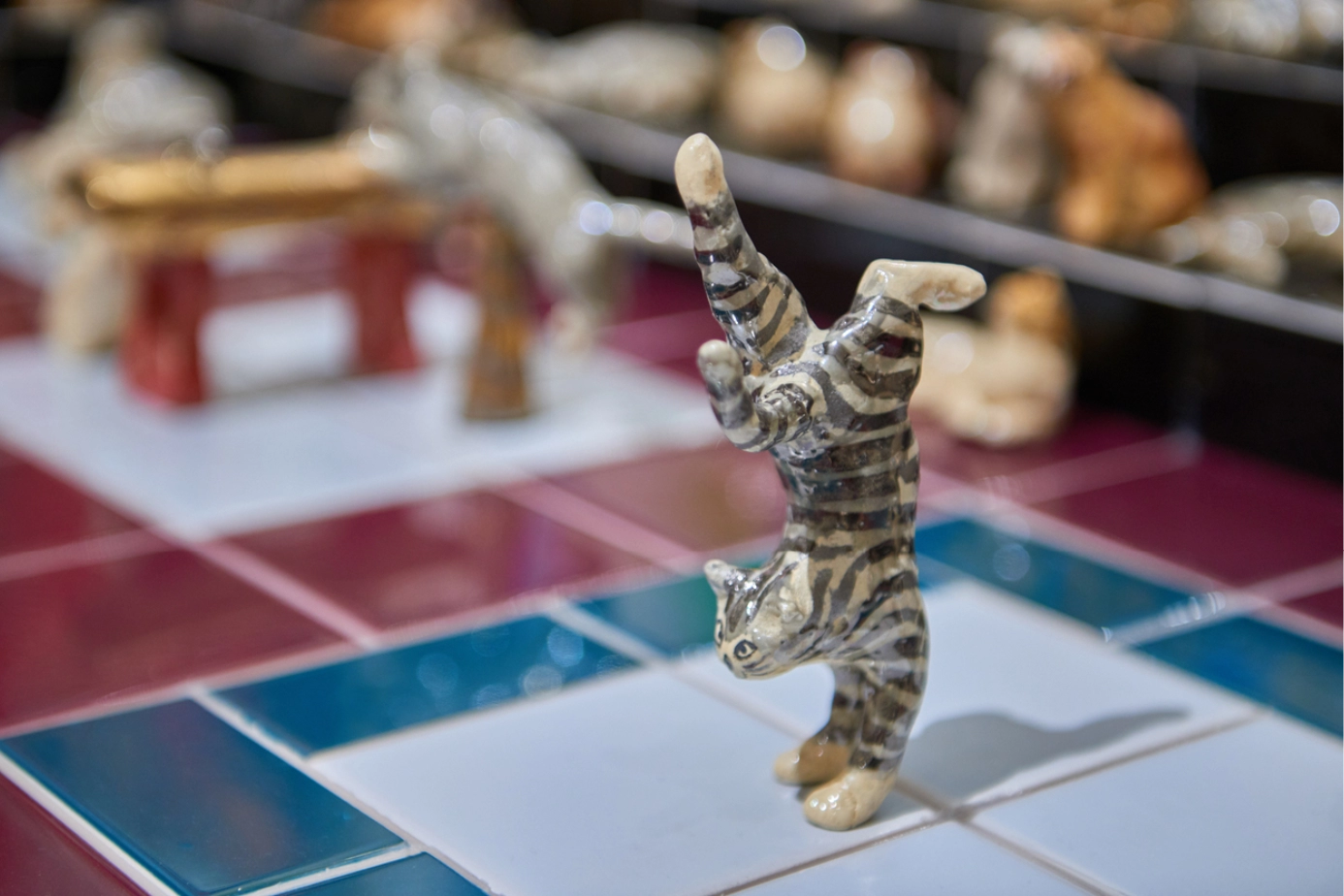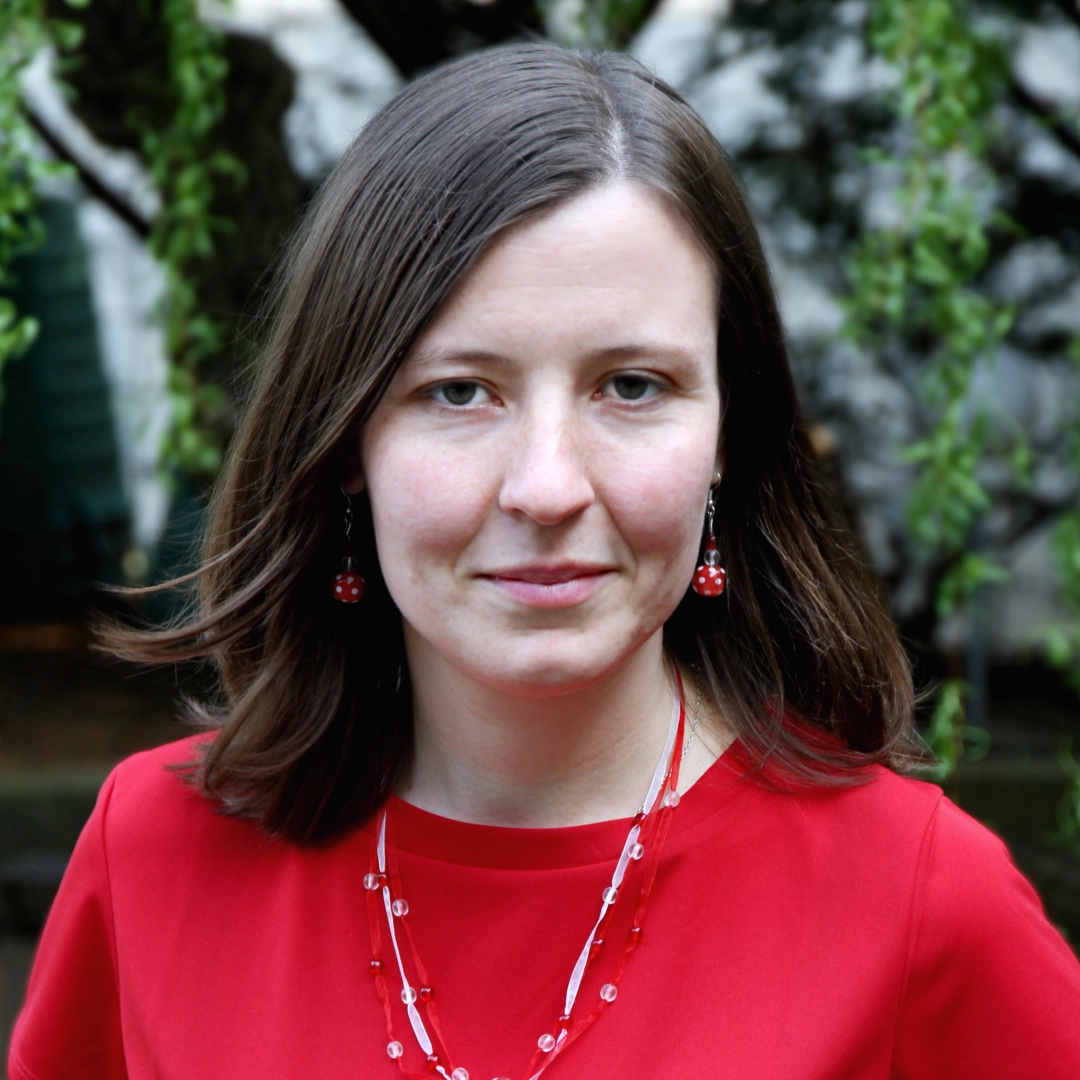What would it look like if only cats competed in the Olympics? That's the question contemporary Japanese artist Nobuaki Takekawa has asked himself in the wake of the commotion surrounding the 2020 Tokyo Games. Through an unusual feline point of view, he reflects on the concept of national rivalry, the megalomaniacal production of the Games and the relationship between a huge sporting event and basic political rights.
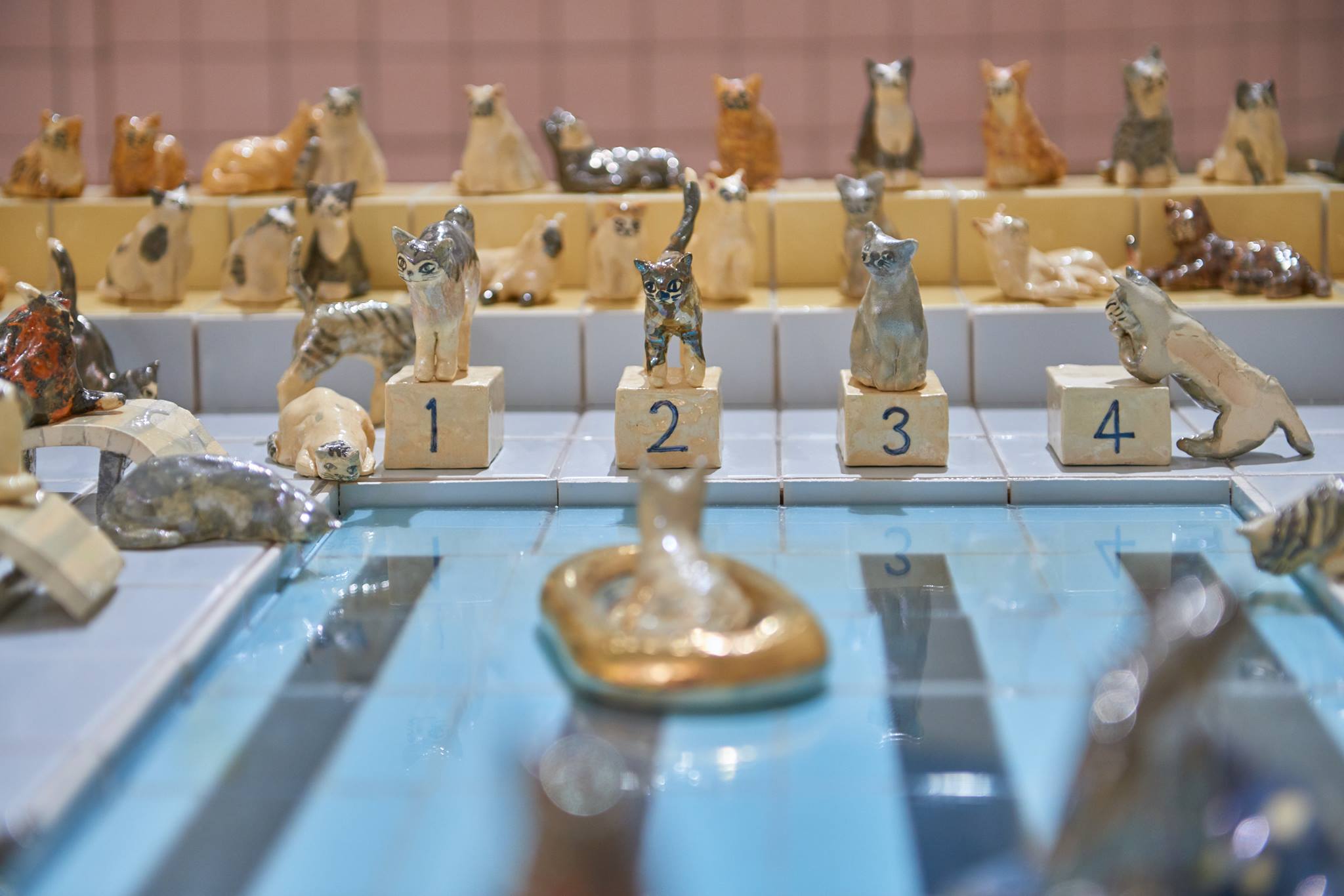
Featuring more than 2,000 ceramic cat athletes and spectators placed in sports stadium settings, the installation provides an opportunity to view the globally popular Olympic Games event from a critical distance.
The humorous tone hides a critique of society
The artist, born in 1977, has exhibited in many important galleries (mainly in Asia). Thanks to his unique sense of humour his works will be appreciated by both art connoisseurs and ordinary viewers. Behind the initial humorous tone, however, lies the artist's critical attitude towards contemporary society and politics. He takes his ideas to logical extremes, often using childlike or primitive aesthetics.
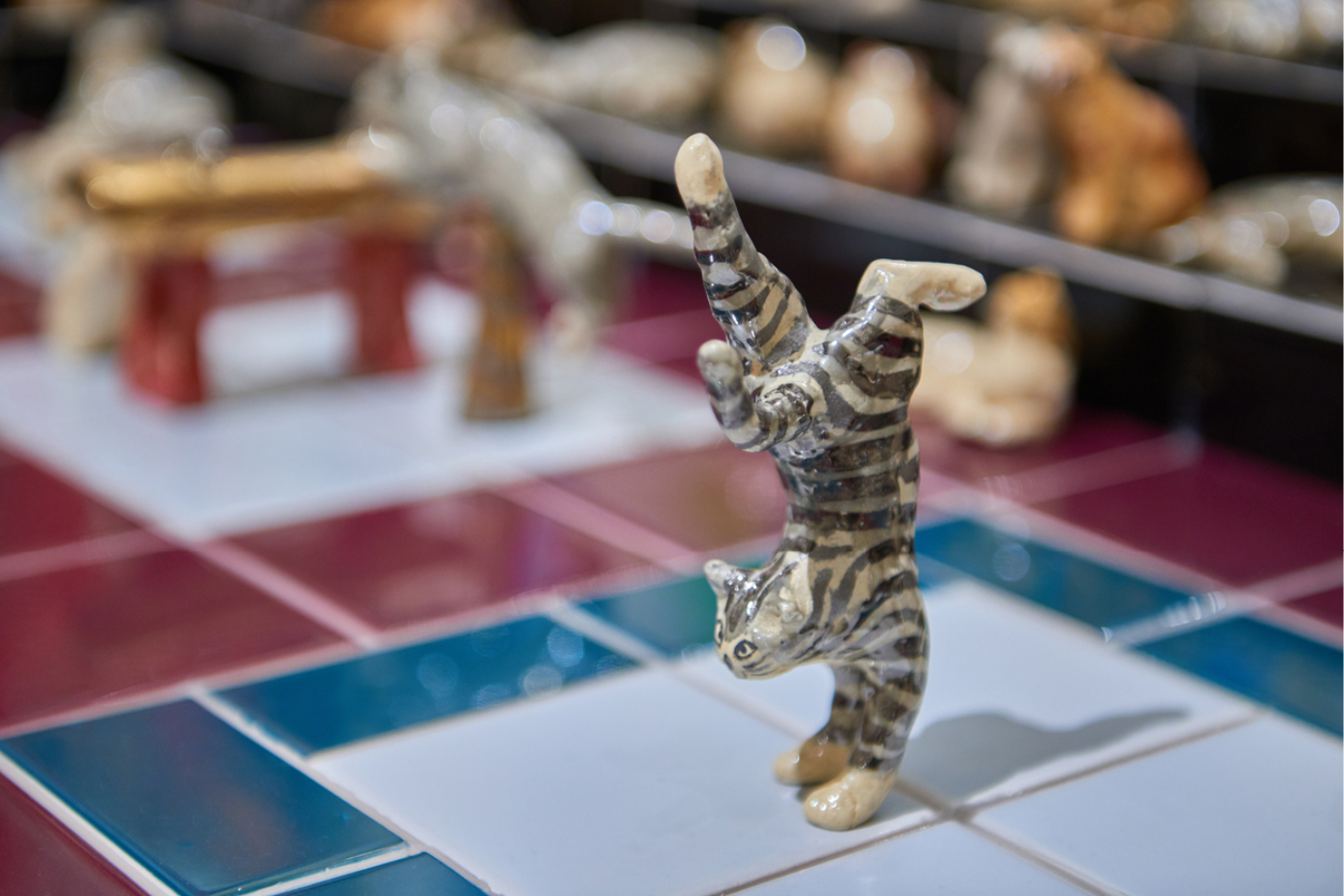
Nobuaki Takekawa first exhibited his cat athletes in 2018 at Singapore's Ota Fine Arts gallery. The exhibition, titled Cat Olympics: in memory of Torajiro, also marked the anniversary of the death of his beloved cat Torajiro, who passed away a year before the Cat Olympics. The exhibition consisted of three miniature models of the sporting event venues, namely the opening ceremony stadium, the swimming pool and the gymnasium. Hundreds of feline athletes made of ceramics are engaged in various activities, ready to take off, practising on equipment, competing against each other, or just relaxing in typical feline positions.
Ceramic cat athletes are accompanied by protest banners
At first glance, we are greeted by a lively and cheerful atmosphere of cute cat athletes and spectators. However, the walls that surround these cat stadiums are lined with drawings and cat-shaped protest banners, inspired by those used by activists during protests, with each cat claiming its own rights.
Through his works, Takekawa lets viewers reflect on various socio-historical issues. The Cat Olympics offers an opportunity to look at this global sporting event through a different lens and notice the problems that accompany it. In the case of the Tokyo Games, this included the approach of the Japanese government, whose Prime Minister Shinzo Abe announced plans to revise parts of the country's constitution in the run-up to the Games. But the artist himself says this is not a direct criticism of society, and leaves his audience to ponder the strange relationship between the excitement of a sporting event and our basic political rights.
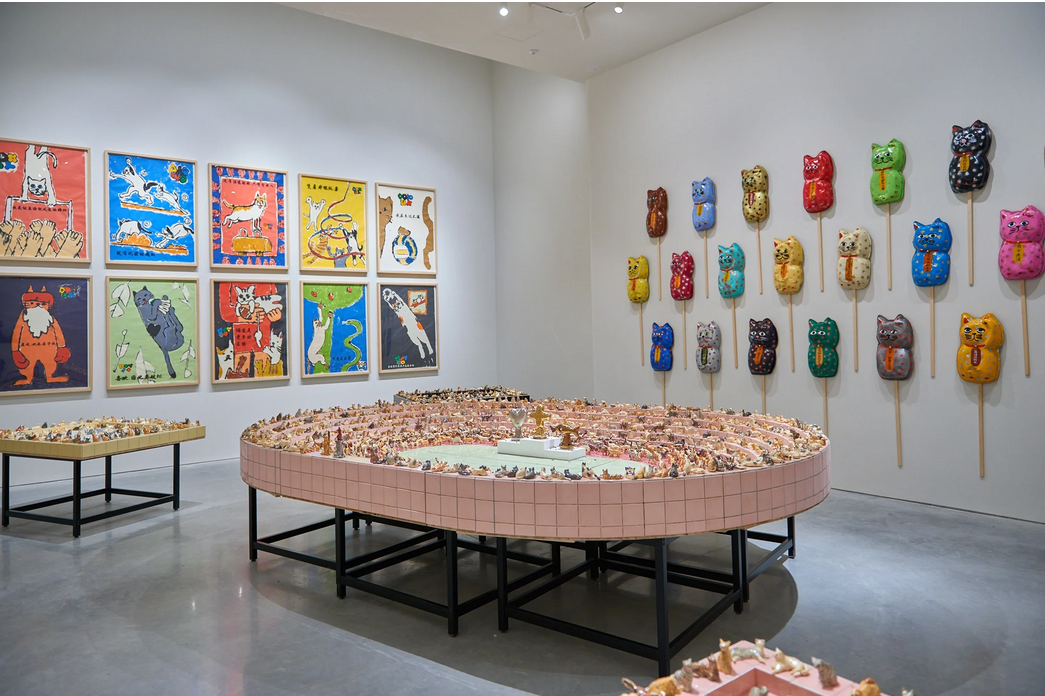
Takekawa uses natural elements as a symbol of human society
Using cats to change the event’s perspective builds on Takekawa's previous artistic practice. In fact, the artist has previously chosen animals and other natural elements, such as the sea and the universe, to express complex issues. This visual language allows him to easily draw the attention of the viewer, who is captivated by the cheerful and familiar elements to suggest deeper themes for them to think about.
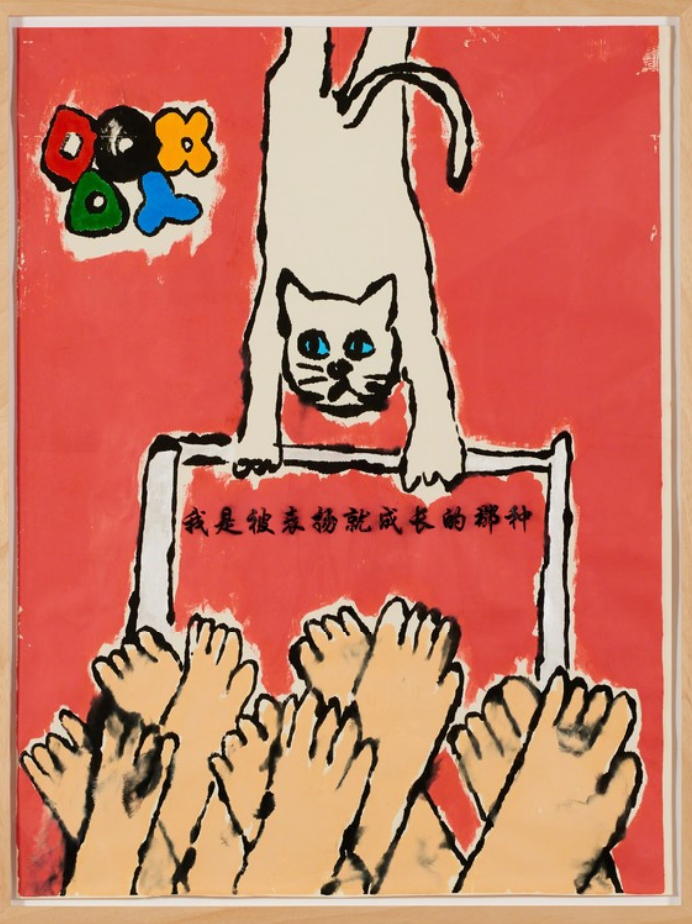
Nobuaki Takekawa works in a wide range of artistic disciplines, from painting and drawing to sculpture and the creation of three-dimensional installations, as was the case with the Cat Olympics. His conceptual works are full of metaphors and sharp social commentary and deal with broader social and political issues. Takekawa himself also participates in many street protests.
The Japanese artist relativizes the Western view of the world through an Asian perspective
At the same time, Takekawa questions the relationship between society, history and individuals and tries to create a new relationship between the expression of traditional Western and Asian art. He looks at the world through an Asian lens, presenting unexpected alternatives to Western visions of history, geography, ecology and technology.
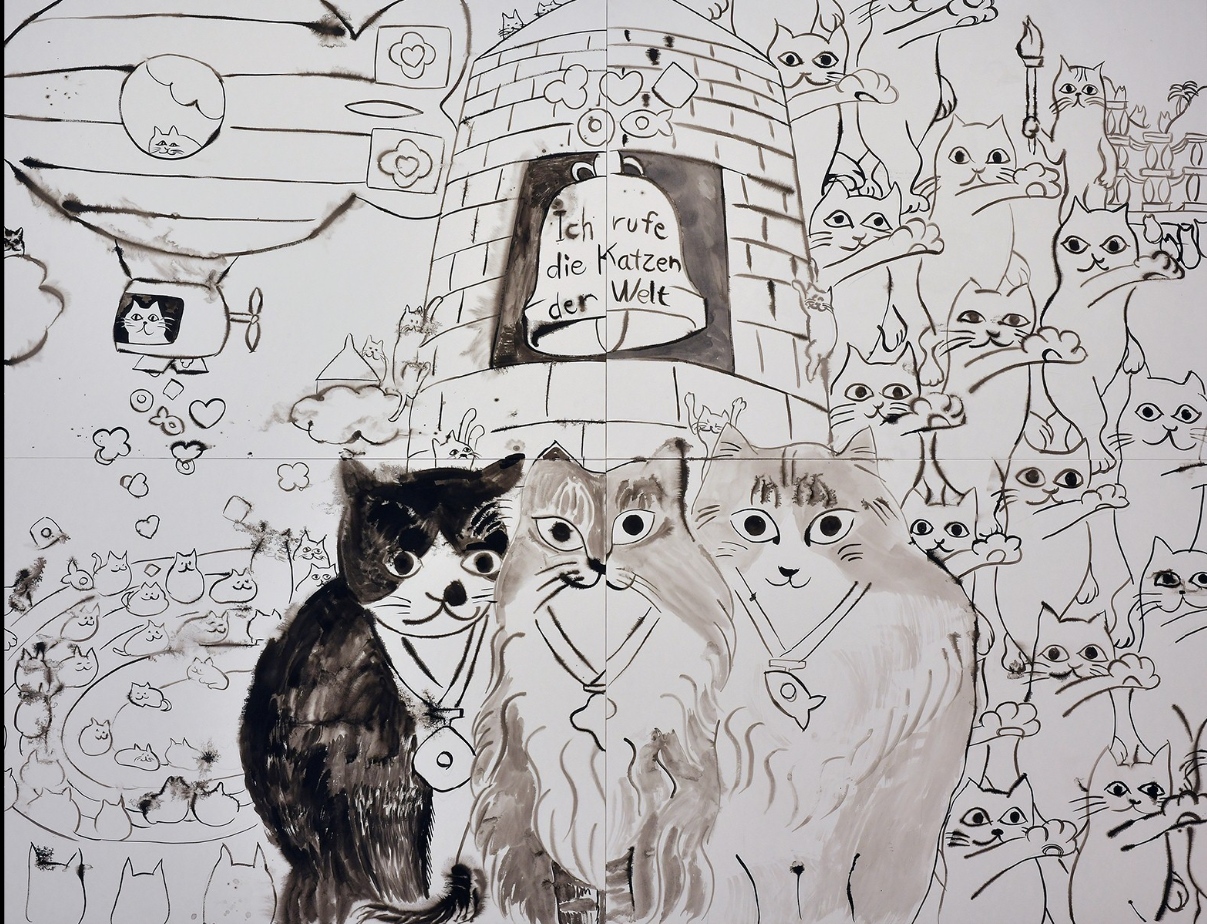
Nobuaki Takekawa was born in Tokyo in 1977 and graduated from the Tokyo University of the Arts in 2002. In the same year, he presented his first solo exhibition at Ota Fine Arts in Tokyo. In 2003, with his Dream Pillow series, he explored the idea of sleep as the time when one is most alone, and the pillow becomes their sole companion. The most striking element was a three-metre-high functional Ferris wheel in the gallery space, on which various types of pillows spun around.
Takekawa’s reaction to the Fukushima nuclear reactor meltdown included a cow and a nuclear island
As a Japanese person, Nobuaki Takekawa could not help but respond to the massive earthquake and subsequent nuclear accident in Fukushima in 2011 with his works. This led him to question the perception of scientific progress as the only correct way forward.
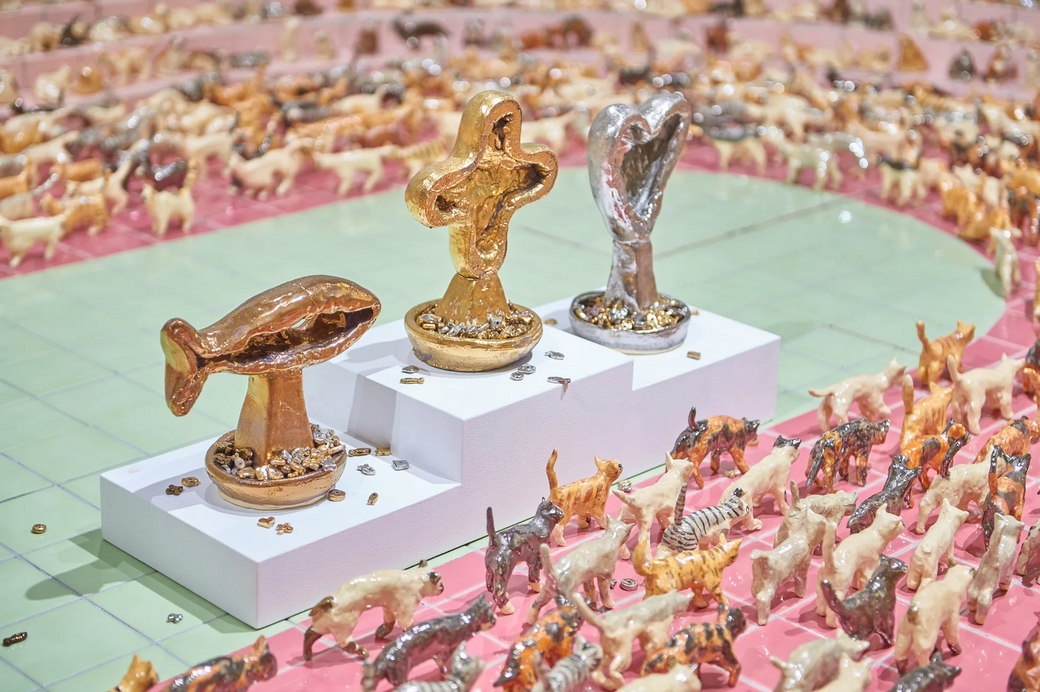
The immediate response to the Fukushima disaster was Nomadism, a 2011 work in which Takekawa used a cow as the main motif. He was shocked to see cows left behind in an evacuation zone that people had long since left. This led to the creation of a larger-than-life sculpture of a cow made from used milk cartons.

Another response to the accident is the eight-meter map of the imaginary Island of Nuclides, which is visually reminiscent of maps well known from school classrooms. On closer examination, however, the viewer discovers that it is based on the periodic table of elements with the unstable ones located around the coastline. In the blank margins, which on historical maps are filled with sea monsters and other fantastical creatures, Takekawa places even more horrifying images of nuclear accidents.
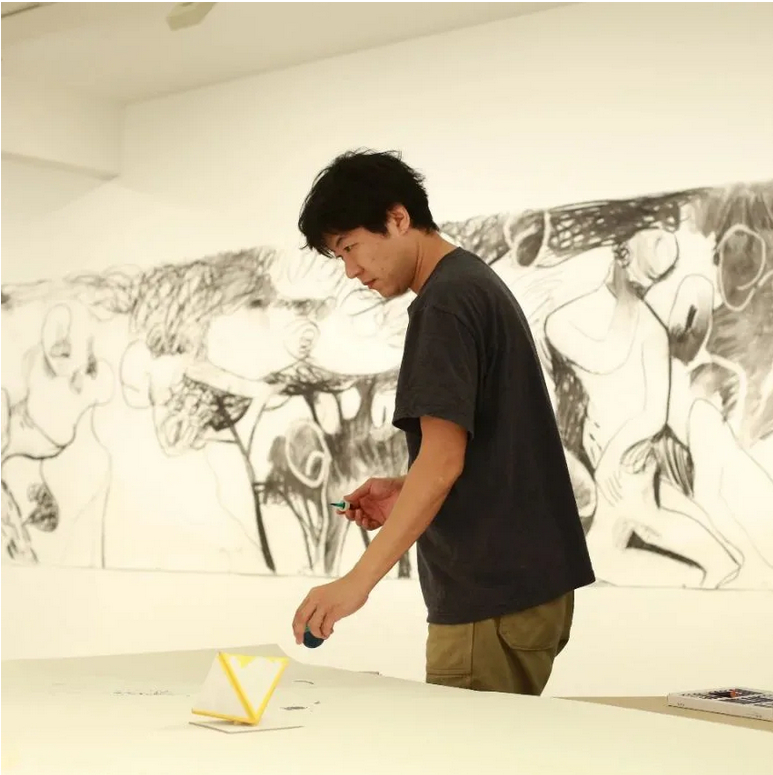
In recent years, Takekawa has participated in various exhibitions in Japan and abroad, including Real Japanesque: The Unique World of Japanese Contemporary in 2012 at The National Museum of Art in Osaka, where he returned this year with the exhibition Faraway Places / Nearby Places. He also exhibited at the 12th Lyon Biennale in 2013, as well as at galleries in South Korea, Singapore, Greece and France. His works can be found in the collection of the National Museum of Art in Osaka and La Collection Lambert in Avignon, France. He regularly returns with his works to the Shanghai, Tokyo and Singapore branches of Ota Fine Arts Gallery, where his most recent exhibition was shown this autumn.
